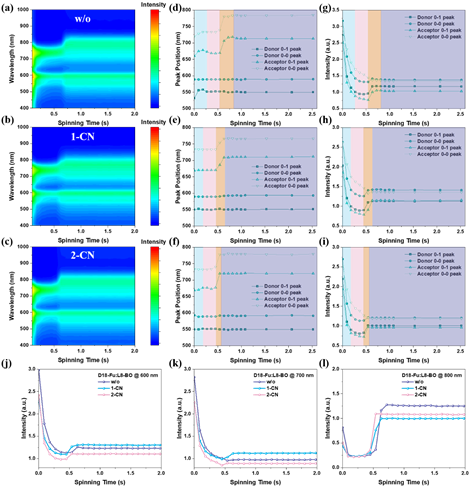Benzo [1,2-b:4,5-b’] difuran (BDF) building block-based polymer donor materials show promise in achieving high power conversion efficiencies (PCEs) of organic solar cells (OSCs). Currently, nearly all high-efficiency organic photovoltaic devices use donor polymers based on the benzo-dithiophene (BDT) unit. However, the highest leading PCEs (>19%) are achieved by BDT polymer donors, while BDF-based devices have achieved highest PCEs of ~17%.
Assistant Prof. Zhang Guangye from the College of New Materials and New Energies of Shenzhen Technology University (SZTU) and his team members realized an efficiency breakthrough for BDF-based polymer donors via device engineering and achieved a PCE of 18.4%, which is the highest efficiency reported for BDF donor materials to date. The work not only provides a new building block that can achieve an efficiency comparable to dominant BDT units, but also proposes a new solid additive that could replace the widely used 1-chloronaphthalene additive. The researchers successfully demonstrated that the synergy of rational material selection and morphology optimization is crucial for advancing the field of OSC. This approach has the potential to significantly impact material synthesis.

In situ UV-vis absorption study [Photo/https://onlinelibrary.wiley.com/doi/abs/10.1002/adma.202301231]
The research team published an article titled “Isomeric Solid Additive Enables High-Efficiency Polymer Solar Cells Developed Using a Benzo-difuran-based Donor Polymer” in Advanced Materials (IF: 32.1). Assistant Prof. Zhang Guangye is the corresponding author, the exchange student Chen Lu the first author, and the postgraduate student Zhao Chaoyue the co-author. SZTU is the first affiliation.
The full text of the article can be found at: https://onlinelibrary.wiley.com/doi/abs/10.1002/adma.202301231.
Drafted by Daisy(姚琦)/ International Cooperation & Student Affairs Office
Revised by International Cooperation & Student Affairs Office
Edited by International Cooperation & Student Affairs Office
